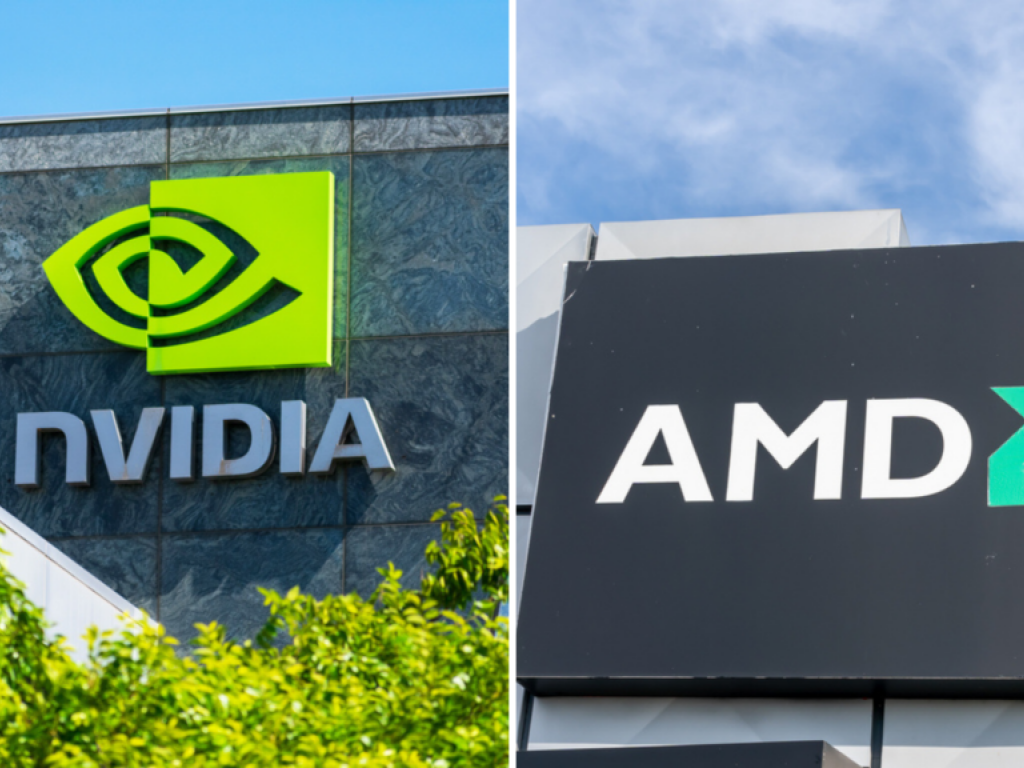AMD Sees 60% AI Growth Ahead, Turning Up The Heat On Nvidia: Top ETFs To Watch
Author: Chandrima Sanyal | November 12, 2025 02:48pm
Semiconductor ETFs are once again in focus after Advanced Micro Devices Inc (NASDAQ:AMD) forecast its data center revenue would increase by 60% over the next three to five years, as the competition between it and Nvidia Corp (NASDAQ:NVDA) for AI dominance steps up a gear.
That upbeat outlook has put chip-focused funds like the iShares Semiconductor ETF (NASDAQ:SOXX) and VanEck Semiconductor ETF (NASDAQ:SMH) back in investors’ sights, with both holding sizeable positions in AMD and Nvidia.
SOXX is a benchmark semiconductor ETF with exposure to leading chipmakers that would benefit if AMD’s growth narrative continues to take hold. SMH is more heavily weighted toward Nvidia and may need to rebalance toward AMD as the latter continues its recent momentum in data center expansion and AI infrastructure. Performance might also depend on how the broader semiconductor market responds to growing demand for large-scale AI systems powered by GPU/CPU.
Large-cap tech ETFs such as the Invesco QQQ Trust (NASDAQ:QQQ), which includes both AMD and NVDA in the Nasdaq-100, may capture the upside amid an AI highlight. However thematic funds such as ARK Autonomous Technology & Robotics ETF (BATS:ARKQ) and Global X Artificial Intelligence & Technology ETF (NASDAQ:AIQ) – would offer investors an opportunity to tap into AI hardware and software development without necessarily stock-picking between chip rivals.
Also Read: AMD’s Earnings Could Rocket By 2030, Bank Of America Says Ahead Of Analyst Day
AI Growth Fuels Sector Rotation
AMD’s long-term growth forecast has injected fresh energy into the semiconductor trade, which had cooled in recent months amid concerns about stretched valuations and data center overcapacity. The chipmaker’s expectation of expanding market share in AI-driven servers and GPUs has revived investor interest in ETFs offering diversified exposure to the sector.
Fund flows into semiconductor ETFs could accelerate if AMD’s revenue projections come to fruition, as investors look beyond single-stock bets to capture the broader AI hardware boom. Nvidia remains the heavyweight in most of these ETFs, but AMD’s steady gains could shift weightings and influence fund performance via upcoming rebalancing cycles.
As the AI infrastructure buildout accelerates globally, ETFs tracking chipmakers are emerging as a proxy for long-term exposure to the next phase of computing growth, where every incremental leap in data center capacity could translate into fresh momentum for semiconductor-focused funds.
Read Next:
Image created using photos from Shutterstock.
Posted In: AIQ AMD ARKQ NVDA QQQ SMH SOXX





